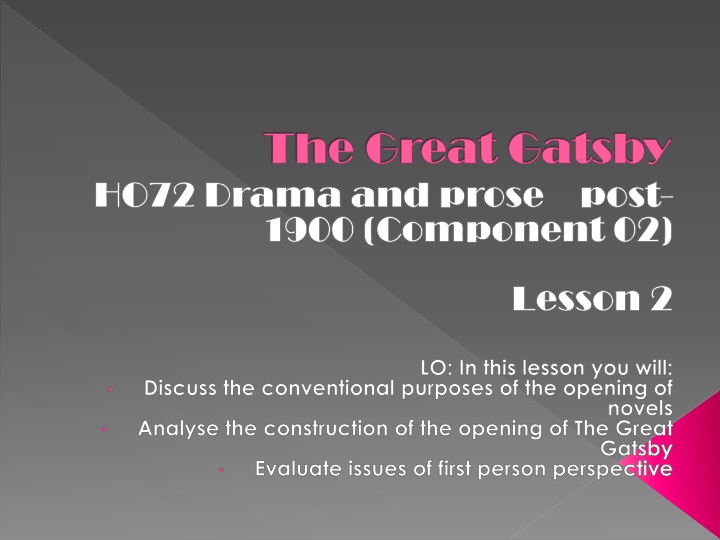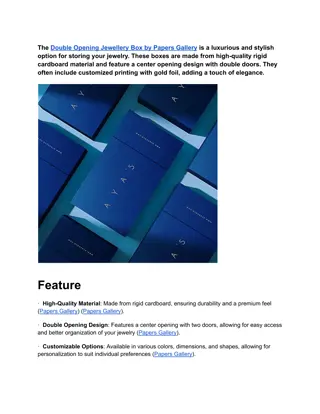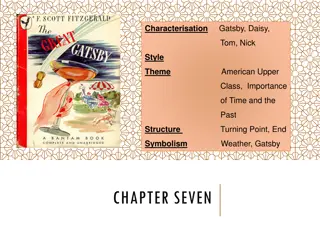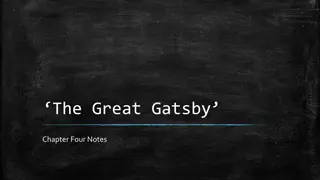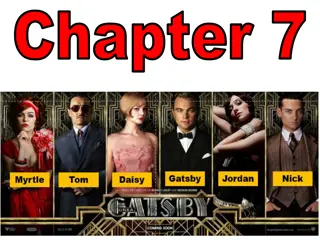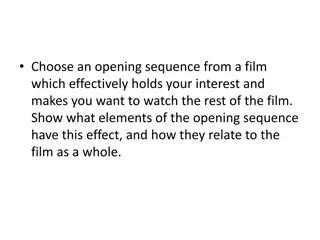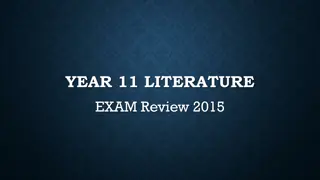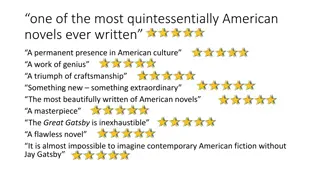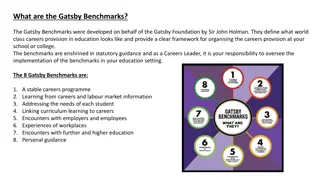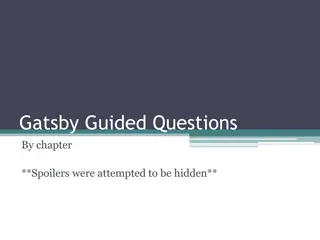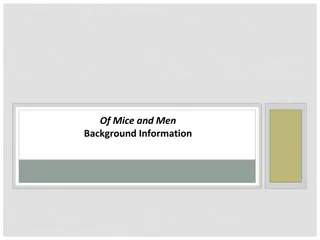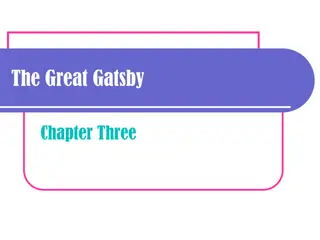Analyzing The Great Gatsby's Opening
Delve into the conventional purposes of novel beginnings, evaluating the introduction of The Great Gatsby through first-person narrative perspective. Explore Nick Carraway's character complexities, contradictions, and role as the narrator, analyzing his distinct voice, actions, and storytelling style. Uncover gaps and inconsistencies in Nick's narrative, pondering the impact on the portrayal of Gatsby's story.
Download Presentation

Please find below an Image/Link to download the presentation.
The content on the website is provided AS IS for your information and personal use only. It may not be sold, licensed, or shared on other websites without obtaining consent from the author.If you encounter any issues during the download, it is possible that the publisher has removed the file from their server.
You are allowed to download the files provided on this website for personal or commercial use, subject to the condition that they are used lawfully. All files are the property of their respective owners.
The content on the website is provided AS IS for your information and personal use only. It may not be sold, licensed, or shared on other websites without obtaining consent from the author.
E N D
Presentation Transcript
The Great Gatsby HO72 Drama and prose post HO72 Drama and prose post- - 1900 (Component 02) 1900 (Component 02) Lesson 2 Lesson 2 LO: In this lesson you will: Discuss the conventional purposes of the opening of novels Analyse the construction of the opening of The Great Gatsby Evaluate issues of first person perspective
Conventional Purposes of Conventional Purposes of Beginnings Beginnings With a partner, discuss and list the conventional purposes of the opening of any novel AO2 establish setting establish context introduce main characters establish narrative perspective
The introduction The introduction AO2 If we judge the opening of the Great Gatsby to be the passages wherein Nick describes himself, his family and his job, which of these conventional functions does the introduction fulfil and how? Narrative perspective Codes of behaviour Contrasts between East and West Egg Gatsby s character
First person narrative First person narrative perspective perspective AO2 Fitzgerald chooses to tell the story in a self- conscious, first-person voice through the narrative of Nick Carraway. In pairs, brainstorm the possible advantages and disadvantages of the first person narrator.
Who is Nick Who is Nick Carraway Carraway? ? AO2 Early in chapter 1, Nick gives the impression that he is tolerant and has strong family and moral values. Look again at the extract from pg 3- 4 elations of men. What evidence can you find that there may be complex contradictions in Nick s character? Extra challenge: how might these contradictions affect Nick s role as narrator of the story?
Nick as Narrator In your group, spend 10 minutes reading and talking about one of the clusters of quotations. Each cluster includes a range of quotations by and about Nick from across the novel. Focus your discussion on what you discover about: Nick as a character, for example: what he says (and doesn t say) how he says it (what makes his voice distinctive, for example word choices, sentence structures, key phrases and so on) what others say about him what he does Nick as a narrator, for example: the way in which he presents himself and the other characters his telling of Gatsby s story gaps, silences and inconsistencies in this telling your own response to Nick and the role he plays in the telling of Gatsby s story.
Independent Task Independent Task AO2 Read the article on Narration (see blog) Make notes (using the headings below)on the ways in which Fitzgerald overcomes the limitations of first person narrative voice: Recounting dialogue between characters Direct quotation of another character s sustained account Paraphrasing another characters words Piecing together fragments of a story into a continuous narrative in Nick s voice Speculation about what might have happened Speculation about what a character may have felt e.g. he must have felt Evocations of another character s consciousness he felt
Independent Learning Task Independent Learning Task AO2 This week, you will carry out some wider reading from The Art Of Fiction by David Lodge. Read and make notes for your folder on the following chapters: Chapter 1 Beginning Chapter 6 Point of View Chapter 34 The Unreliable Narrator Consider how each relates to the text you are studying. Add these notes to your reading journal. (available on blog)
Introducing Tom, Daisy and Introducing Tom, Daisy and Jordan Jordan AO2 For each of the characters, list the adverbs used about their actions from pages 7 14. What impression do you get of each character from the list attributed to them? Does the list support the more direct comments on the character? Is the use of adverbs in the narration attributed to the narrator in the same way that statements of opinion are? Should we interpret it that way? Tom restlessly Daisy Jordan
Direct Comments Direct Comments Tom & Daisy: Two old friends who I scarcely knew at all. Tom: A rather hard mouth and supercilious manner They spent a year in France for no particular reason, and then drifted here and there unrestfully Jordan: Her grey sun-strained eyes looked back at me with polite reciprocal curiosity out of a wan, charming, discontented face. Daisy: Her face was sad and lovely with bright things in it, bright eyes and a bright, passionate mouth, but there was an excitement in her voice a promise that she had done gay, exciting things just a while since and that there were gay, exciting things hovering in the next hour.
Independent learning task Independent learning task AO2 Complete the summary paragraphs on the handout you have been given on how each of the characters is introduced. Bring to the next lesson.
Introducing Tom, Daisy and Introducing Tom, Daisy and Jordan Jordan AO2 Look carefully again at the section from Nick s entrance on pg 7: The only completely stationary object to Tom and Jordan s exit: strolled back into the library on pg 13. Work in groups of four to break this down into a number of smaller sections. To help decide on the smaller sections, focus on tensions, and exits and entrances within the group. Once agreed, decide on a title for each small section.. Focus on characterisation and character relationships, as well as mood and atmosphere. Select a quote from the text to support each section.
Homework Homework Update your reading journal include character profile pages for Tom, Daisy and Jordan with key quotations from chapter 1. Complete the chapter questions (on Blog) Read chapter 2
